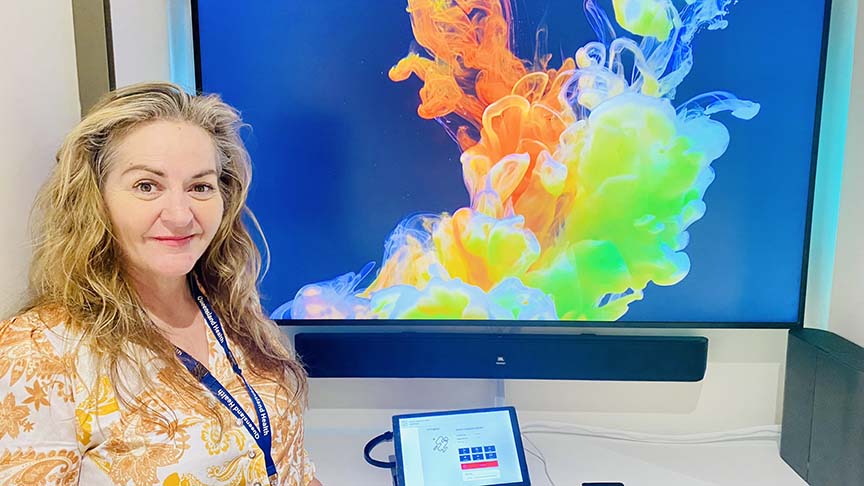
Senior Carer Peer Coordinator Melissa Bult in the new multi-sensory room, being developed as part of the new Mental Health Unit at Cairns Hospital.
A QUEENSLAND first multi-sensory experience for patients is being created as part of Cairns Hospital’s new Mental Health Unit.
Concrete pours for the $70 million project continue to progress the three-storey building, with the roof to be topped within the next few months.
The new Mental Health Unit will consist of 53-beds, five more than previously, including a 10-bed Mental Health Intensive Care unit.
The new facility will feature a modern, culturally appropriate design, family friendly spaces and contemporary technology.
Cairns and Hinterland Hospital and Health Service Chief Executive Leena Singh said the new facility would provide additional capacity and a better environment to help people in their recovery from mental illness.
‘This is an important infrastructure project for the Cairns economy, creating nearly 70 full-time equivalent jobs over the life of the project,’ she said.
‘I am delighted to announce that our program of works is on schedule, with the new building to be completed and operational in mid-2024.’
Ms Singh said the design of the infrastructure would incorporate consideration of culturally appropriate facilities for Aboriginal and Torres Strait Islander patients.
‘Consumers, carers and staff have been involved in the planning and design of the new facility with the architects to ensure it will meet our needs into the future,’ she said.
Mental Health Clinical Director Dr Mike Tervit said as part of the new building, CHHHS had been developing a sensory modulation room for mental health patients as a potential wellness tool.
‘The multi-sensory experience has been developed in collaboration with mental health clinicians and project staff from capital infrastructure, eHealth and ICT under the new Mental Health Unit Redevelopment, and it will be evaluated over a two-month period,’ he said.
‘This digital solution aims to provide a more immersive and personalised experience for patients, using interactive visual and soundscapes that can be changed to the individual's specific needs.
‘The scenes have been developed with different outcomes in mind, such as soothing; engagement and distracting - along with an interactive module with gesture control.’
Dr Tervit said there were also soothing lights and gentle scents such as jasmine or white tea released into the room.
‘There are plans to introduce a day bed, rocking chair, weighted blankets, bubble tubes and other textural elements so most senses are targeted once the project becomes live in the new Mental Health Unit,’ he said.
He said there had been very positive feedback from staff, key stakeholders, and the community to the multi-sensory experience.
‘Nurses are asking if they can bring patients in already,’ he said.
‘The creation of this digital solution represents an exciting development for mental health care.
‘It has the potential to provide a more immersive sensory experience for patients, which could help them better manage their mental health challenges.’